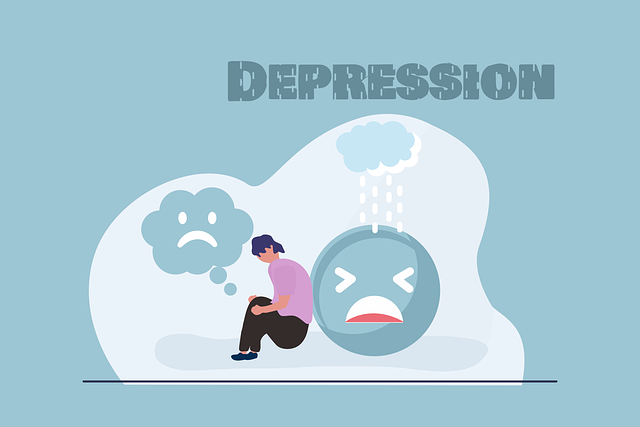Burnout is a significant concern in healthcare, impacting both provider well-being and patient outcomes. Early recognition of signs like irritability, fatigue, and emotional detachment is vital for prevention. Factors contributing to burnout include excessive workload, long hours, high stress, and limited personal time, with specialized services like Longmont Domestic Violence Therapy facing unique pressures. Enhancing mental health awareness through regular risk assessments can help identify vulnerable professionals early. Organizations can mitigate risks by recognizing triggers and implementing targeted strategies, fostering a supportive environment and resilience among their workforce. For Longmont Domestic Violence Therapy professionals, integrating conflict resolution techniques and Risk Management Planning is crucial for well-being and quality of care. Prioritizing self-care, emotional regulation, and evidence-based interventions creates a sustainable working environment, preventing burnout and enhancing support to clients, ultimately improving outcomes in domestic violence cases.
In the demanding field of Longmont Domestic Violence Therapy, healthcare providers face unique challenges that can lead to burnout. This article explores comprehensive strategies to prevent professional exhaustion. We delve into recognizing burnout’s subtle symptoms and triggers specific to therapists working with domestic violence cases. By implementing effective prevention tactics, cultivating resilience, and adopting self-care practices, therapists can sustain their well-being and provide optimal care for their clients.
- Recognizing Burnout: Symptoms and Triggers in Healthcare Providers
- Implementing Effective Prevention Strategies for Longmont Domestic Violence Therapy Professionals
- Cultivating Resilience and Self-Care Practices for Sustained Well-being
Recognizing Burnout: Symptoms and Triggers in Healthcare Providers

Burnout is a significant concern within the healthcare industry, impacting not only the well-being of providers but also patient outcomes. Recognizing burnout early is crucial for effective prevention and intervention strategies. Healthcare professionals may experience burnout when they feel overwhelmed, emotionally drained, or detached from their work. Common symptoms include increased irritability, fatigue, insomnia, reduced satisfaction, and a sense of cynicism towards patients and colleagues. These signs often develop gradually, making it essential for both individuals and organizations to stay vigilant.
Various factors contribute to healthcare provider burnout, including excessive workload, long working hours, high-stress environments, and limited personal time. In the context of Longmont Domestic Violence Therapy or similar specialized services, professionals may face additional pressures related to sensitive case management and emotional demands. Enhancing Mental Health Awareness through regular risk assessments for mental health professionals can help identify vulnerable individuals early on. By recognizing triggers and implementing targeted burnout prevention strategies, healthcare organizations can create a more supportive work environment, ultimately mitigating risks and fostering a healthier, more resilient workforce.
Implementing Effective Prevention Strategies for Longmont Domestic Violence Therapy Professionals

Longmont Domestic Violence Therapy professionals face unique challenges that can lead to burnout if left unaddressed. Implementing effective prevention strategies is crucial to safeguard the well-being of these dedicated individuals and ensure they can continue offering quality care. One key approach involves integrating conflict resolution techniques into their practice, fostering healthier interactions with clients and reducing the emotional strain associated with high-conflict situations.
Additionally, Risk Management Planning for Mental Health Professionals becomes essential in establishing clear boundaries and strategies to mitigate potential risks. By prioritizing self-care, practicing emotional regulation, and incorporating evidence-based interventions, Longmont Domestic Violence Therapy professionals can create a more sustainable working environment. These measures not only prevent burnout but also enhance their ability to support clients effectively, ultimately improving outcomes in domestic violence cases.
Cultivating Resilience and Self-Care Practices for Sustained Well-being

In the high-pressure environment of healthcare, burnout is a significant concern. Cultivaring resilience and adopting effective self-care practices are essential strategies to mitigate this issue. Healthcare providers must prioritize their well-being to sustain their performance and maintain patient care quality over time. This involves recognizing the importance of balance and setting boundaries between professional and personal life. Engaging in regular physical activity, practicing mindfulness techniques, and connecting with support networks are proven methods to build resilience and promote mental health.
Longmont Domestic Violence Therapy, for instance, demonstrates how community outreach programs can foster resilience among vulnerable populations. By implementing communication strategies that encourage open dialogue and empathy, these programs empower individuals to cope with stress and adversity. Resilience building through such initiatives not only benefits the participants but also serves as a model for healthcare providers to enhance their own coping mechanisms and self-care routines.
Preventing burnout among healthcare providers, particularly those in the specialized field of Longmont Domestic Violence Therapy, is a holistic process. By recognizing the symptoms and triggers associated with burnout, implementing effective prevention strategies like those discussed, and cultivating resilience alongside self-care practices, professionals can foster sustained well-being. These measures are vital for maintaining the quality of care and ensuring that healthcare providers remain dedicated to assisting others over the long term.









